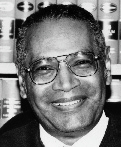Terry J. Hatter Jr. facts for kids
Quick facts for kids
Terry J. Hatter Jr.
|
|
|---|---|
 |
|
| Senior Judge of the United States District Court for the Central District of California | |
| Assumed office April 22, 2005 |
|
| Chief Judge of the United States District Court for the Central District of California | |
| In office 1998–2001 |
|
| Preceded by | William Matthew Byrne Jr. |
| Succeeded by | Consuelo Bland Marshall |
| Judge of the United States District Court for the Central District of California | |
| In office December 20, 1979 – April 22, 2005 |
|
| Appointed by | Jimmy Carter |
| Preceded by | Seat established by 92 Stat. 1629 |
| Succeeded by | Philip S. Gutierrez |
| Judge of the Los Angeles Superior Court | |
| In office 1977–1980 |
|
| Personal details | |
| Born | March 11, 1933 Chicago, Illinois, U.S. |
| Education | Wesleyan University (BA) University of Chicago (JD) |
Terry Julius Hatter Jr. (born March 11, 1933) is a very experienced judge. He serves as a senior United States district judge in California. This means he is a federal judge who handles important cases in the Central District of California.
Contents
Early Life and Education
Terry J. Hatter Jr. was born on March 11, 1933, in Chicago, Illinois. He worked hard in his studies. He earned a Bachelor of Arts degree from Wesleyan University in 1954. Later, he went to law school. He received his Juris Doctor degree from the University of Chicago Law School in 1960.
A Career in Law and Public Service
Before becoming a judge, Terry Hatter Jr. had a diverse career. He served in the United States Air Force from 1955 to 1956. After that, he worked for the United States Veterans Administration. This agency helps military veterans.
He also worked as a private lawyer for a short time. He was an assistant public defender in Cook County, Illinois. A public defender is a lawyer who helps people who cannot afford legal help.
From 1962 to 1966, he was an Assistant United States Attorney. This means he was a lawyer who represented the U.S. government in court. He worked in both Northern and Eastern California.
Helping Communities
Terry Hatter Jr. also focused on helping communities. He was Chief Counsel for the San Francisco Neighborhood Legal Assistance Foundation. This group provided legal help to people in need. He also directed legal services for the Office of Economic Opportunity in San Francisco.
From 1970 to 1973, he was the Executive Director of the Western Center on Law and Poverty in Los Angeles. This organization works to fight poverty through legal action.
Teaching Law
Mr. Hatter also shared his knowledge by teaching. He was a professor at the USC Gould School of Law and Loyola Law School in Los Angeles. He taught future lawyers about the law.
Working for the City
He also held important roles in the city of Los Angeles. He was a special assistant to the mayor. He helped plan for criminal justice and urban development in the city.
Becoming a Judge
Terry Hatter Jr. became a judge in California in 1977. He served on the Superior Court of California in Los Angeles County. This is a state court that handles many different types of cases.
Federal Judge Service
In 1979, President Jimmy Carter nominated Terry Hatter Jr. to become a federal judge. He was chosen for a new judge position in the United States District Court for the Central District of California. The United States Senate approved his nomination. He officially became a federal judge on December 20, 1979.
He served as the Chief Judge for the Central District of California from 1998 to 2001. The Chief Judge helps manage the court's operations. On April 22, 2005, he took on senior status. This means he continues to hear cases but with a reduced workload.
See also
- List of African-American federal judges
- List of African-American jurists
- List of United States federal judges by longevity of service

